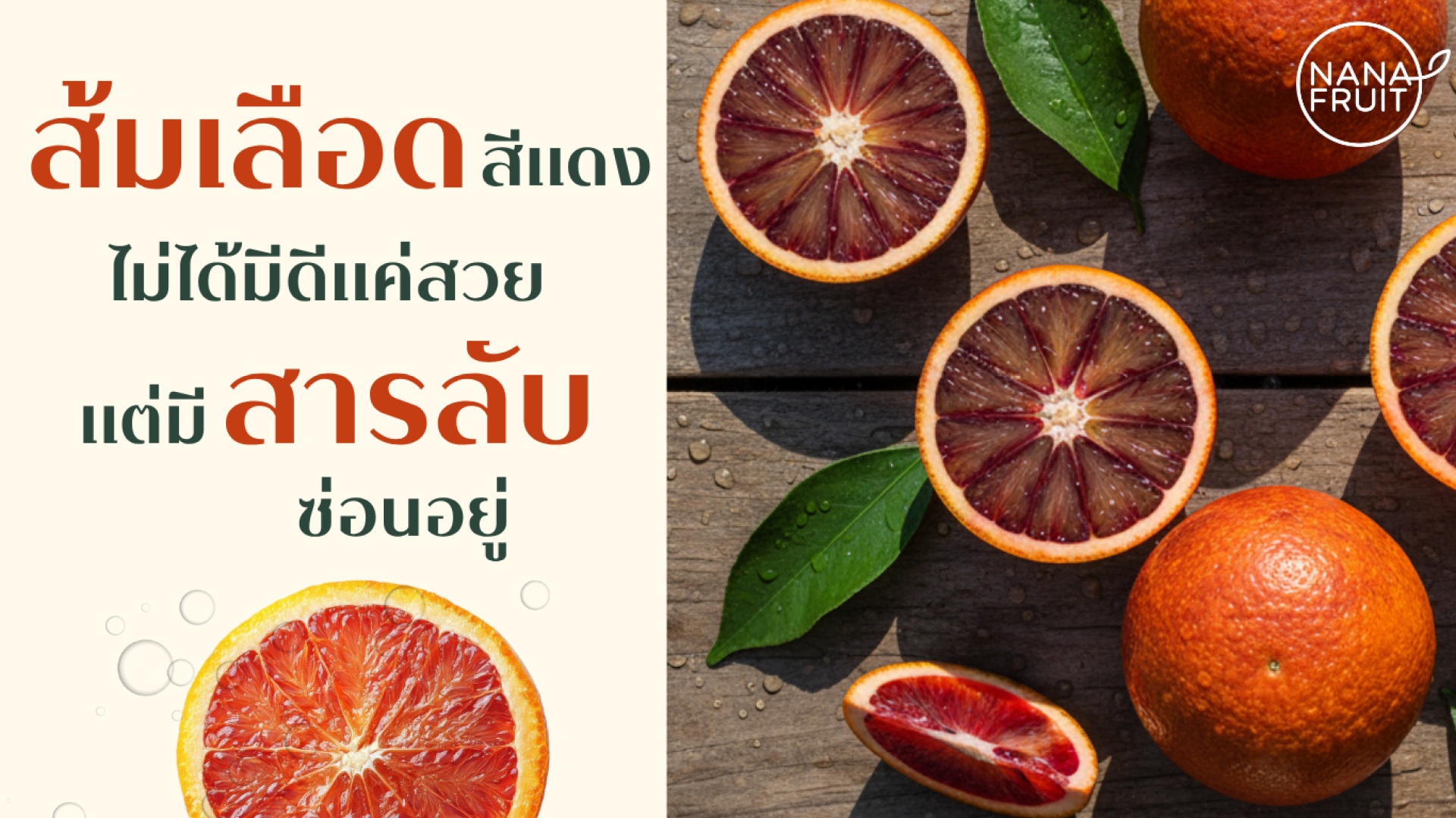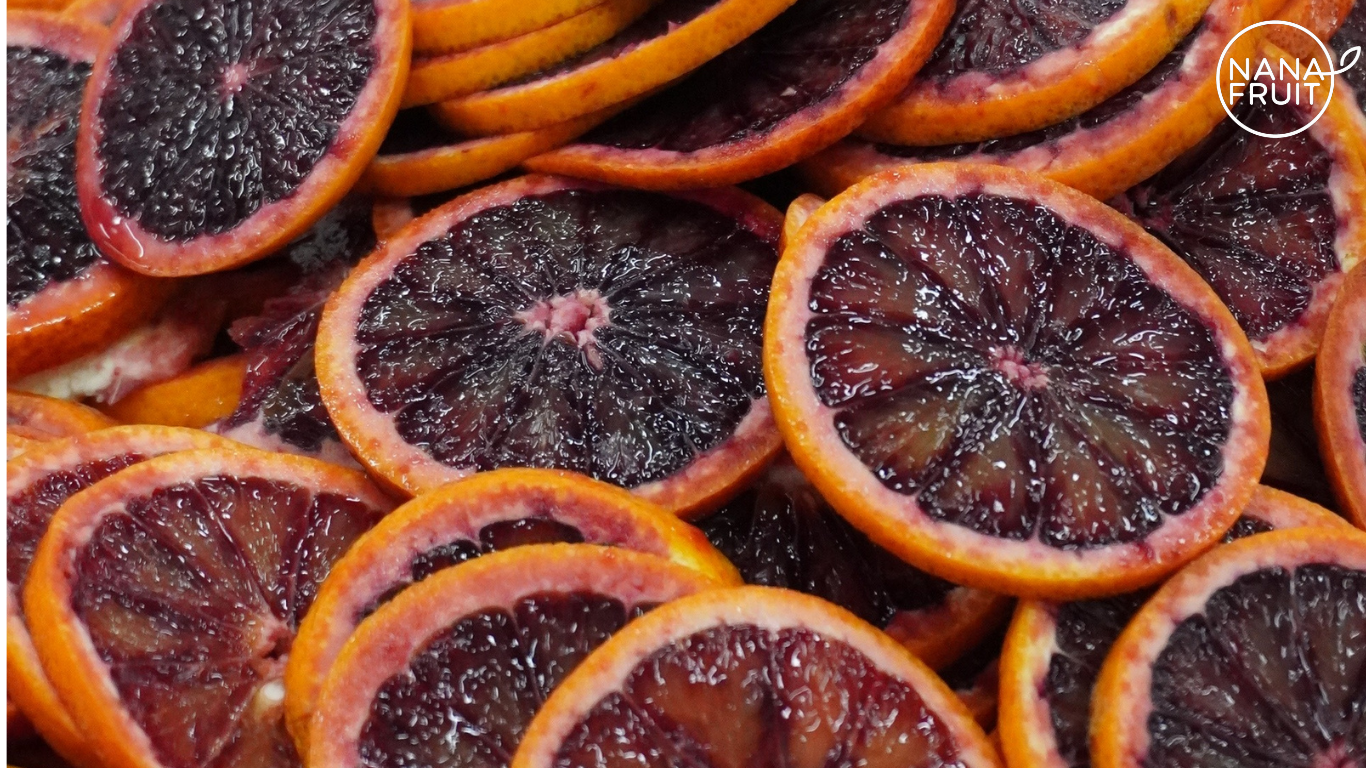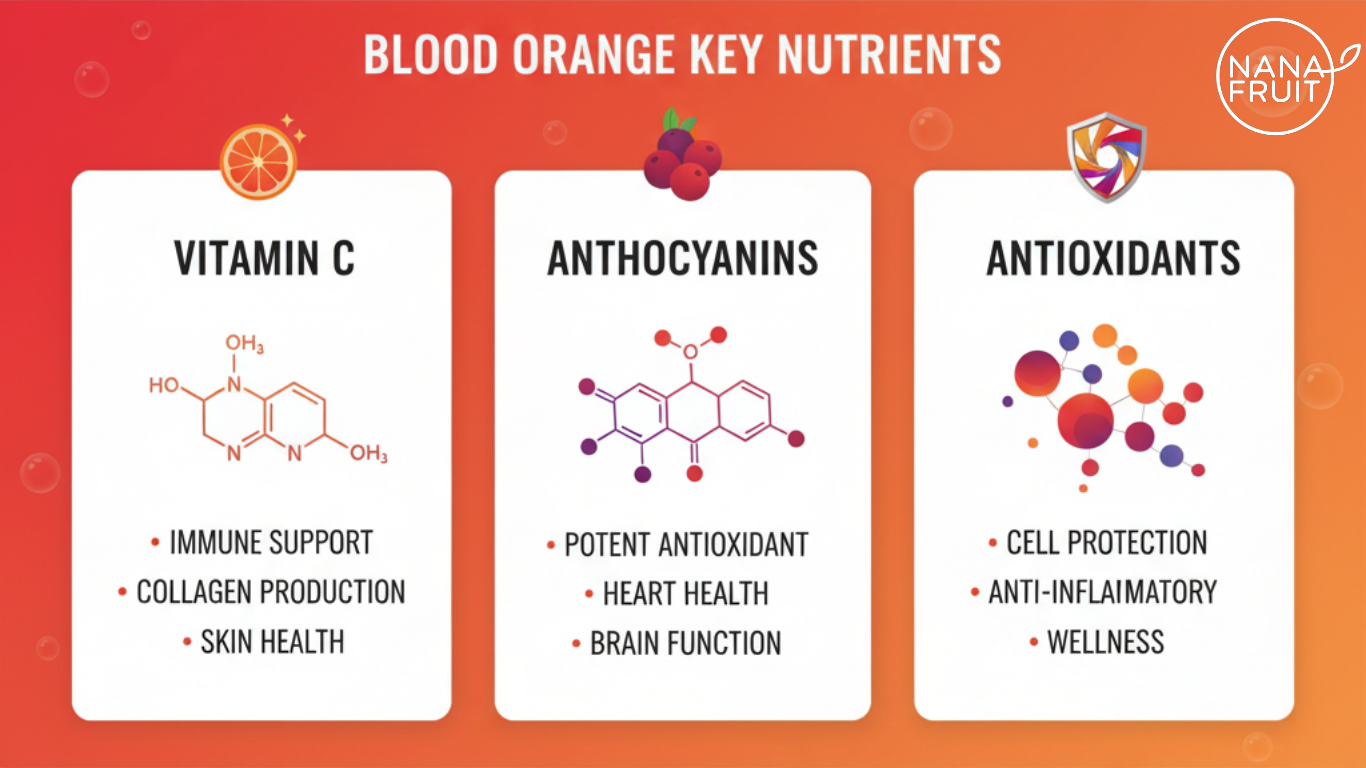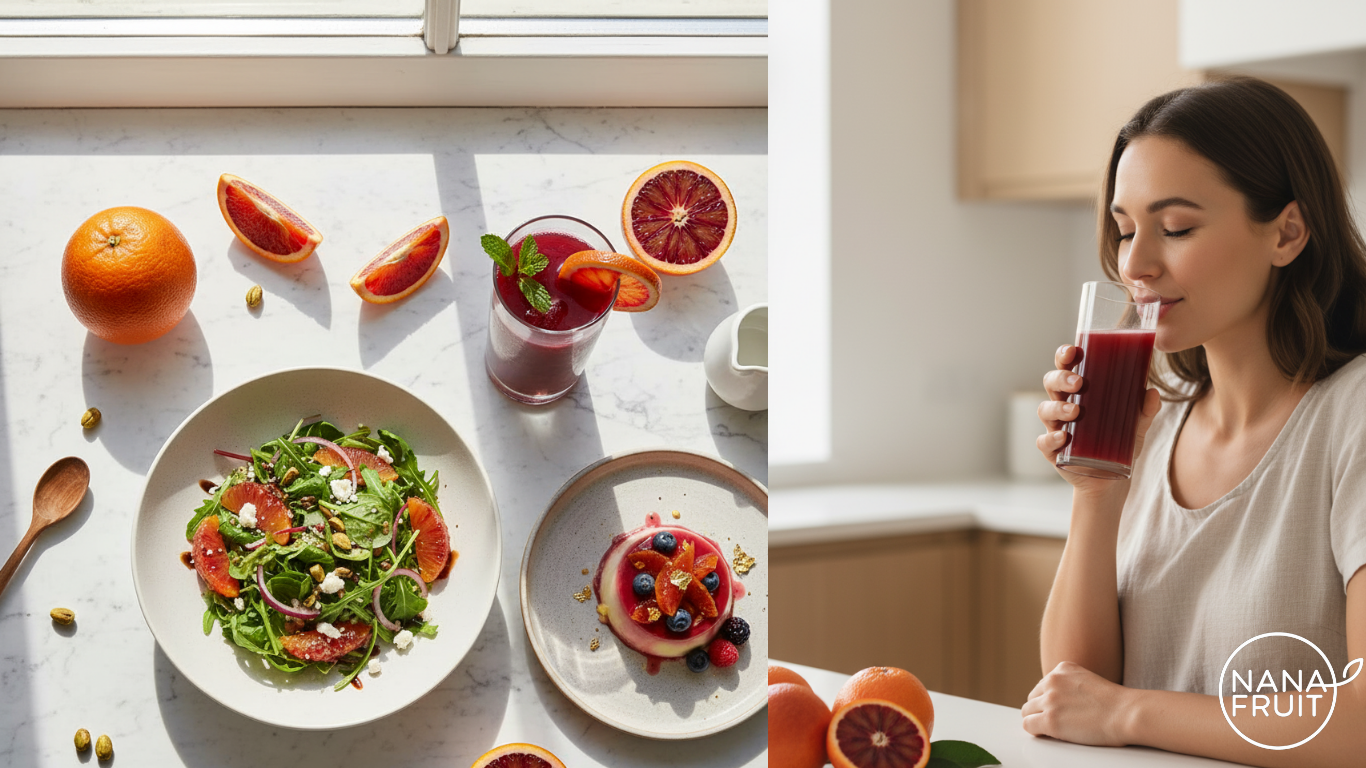Blood oranges aren’t just gorgeous with their vibrant red hue — they’re hiding a secret super compound inside!


Anthocyanins are water-soluble flavonoid pigments responsible for red, purple, and blue hues in fruits and flowers. In most citrus, they are absent; but in blood orange (Citrus × sinensis), they accumulate in the flesh and sometimes the rind, giving the fruit its distinctive color.
According to a review, anthocyanins are the principal bioactive compounds in blood orange, important for antioxidant activity and considered an indicator of fruit quality.
Research shows that Cyanidin-3-glucoside and Cyanidin-3-(6-malonylglucoside) are the predominant anthocyanins in blood orange, making up over 90% of total anthocyanin content.
Other minor anthocyanins (e.g., delphinidin derivatives, peonidin forms) exist but in much lower concentrations

- Temperature fluctuations: Blood oranges tend to build more anthocyanins when nighttime temperatures are lower, characteristic of Mediterranean climates.
- Cold storage after harvest: Postharvest cold storage (e.g., 68 °C) can stimulate further anthocyanin accumulation and preserve internal fruit quality.
- Rootstock / grafting: Using certain rootstocks (for example, Trifoliate orange) can enhance anthocyanin accumulation in fruit.
- Postharvest treatments / elicitors: Physical or chemical treatments after harvest can accelerate anthocyanin synthesis and stabilize pigmentation.
4. Health Effects & Benefits
- Antioxidant & anti-inflammatory: Anthocyanins scavenge free radicals, reduce oxidative stress and inflammation, which are underlying mechanisms in many chronic diseases.
- Cardiovascular support: Blood orange compounds, including anthocyanins, have been linked to improved lipid profiles (lower LDL, higher HDL), reduced arterial inflammation and better vascular function.
- Supporting weight management: A clinical study on Moro blood orange extract found that combining it with diet and exercise resulted in greater weight loss and reduced waist/hip circumferences compared to placebo. This may be partly due to modulation of lipid metabolism by its phytocomplex (including anthocyanins).
- Gut & metabolic health: In animal models, blood orange juice intake affected gut microbiota, lipid and glucose metabolism, inflammation, and hypertension.
- Bioavailability in humans: In an intervention study, feeding 600 mL/day of blood orange juice increased plasma levels of vitamin C, cyanidin-3-glucoside, carotenoids, and improved lymphocyte resistance to oxidative damage.
5. Limitations & Considerations
- Degradation over time: Anthocyanin content can decline during storage or processing (light, heat, pH changes).
- Commercial product variance: Many commercial blood orange juices fail to maintain anthocyanin levels as claimedover 60% of tested samples did not meet minimum anthocyanin content specifications
- Lack of long-term human data: While many beneficial effects are promising, more large-scale, long-duration human trials are needed to confirm robust preventive health claims

Summary
Anthocyanin is the pivotal compound that sets blood orange apart from other citrus. Its more than just pigment its a bioactive molecule with antioxidant, anti-inflammatory, cardiovascular, metabolic, and cellular-protective roles. The predominant anthocyanins in blood orange are Cyanidin-3-glucoside and Cyanidin-3-malonylglucoside, comprising the bulk of its anthocyanin profile.
Reference
1. https://en.wikipedia.org/wiki/Blood_orange?Wikipedia contributors. (2025). Blood orange. Wikipedia.
2. Habibi, F., et al. (2022). Anthocyanin in blood oranges: Postharvest enhancement and preservation. Crit. Rev. Food Sci. Nutr.
3. Moreno, D. A., & Castillo, J. (2003). Characterization of major anthocyanins and the color of red-fleshed Budd blood orange. ResearchGate.
4. Habibi, F., et al. (n.d.). Postharvest anthocyanin enhancement in blood orange fruit. Univ. Florida, IFAS EDIS.
5. A New Study Says Changing the Way We Refrigerate Blood Oranges Could Make Them Healthier. (2024). Food & Wine.
6. Chen, Z., et al. (2022). Rootstock effects on anthocyanin accumulation during blood orange fruit development. Agriculture, 12(3), 342.
7. Grosso, G., et al. (2013). Red orange: Experimental models and epidemiological evidence of its benefits. Oxidative Med. Cell. Longev., 2013, 157240.
8. Briskey, D., et al. (2022). Effectiveness of Moro blood orange extract on weight loss. Nutrients, 14(3), 427.
9. Corrêa, T. A. F., et al. (2023). Blood orange juice intake changes specific bacteria of gut microbiota associated with cardiometabolic biomarkers. Front. Microbiol., 14, 1199383.
10. Scordino, M., et al. (2015). Blood orange anthocyanins in fruit beverages. Beverages, 1(2), 8294.
11. Lee, H. S. (2002). Characterization of major anthocyanins and the color of red-fleshed Budd Blood orange. J. Agric. Food Chem., 50(5), 12431246.


